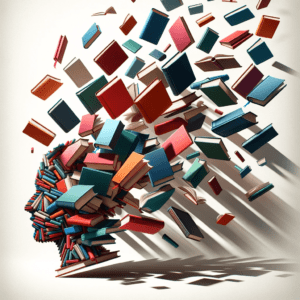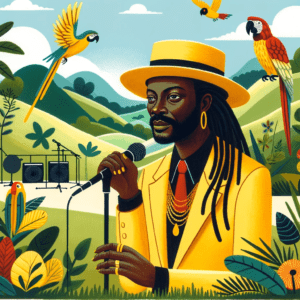Introduction:
Illustration can be as subtle as it is powerful, capable of telling stories at a single glance. A fascinating example of this subtlety is an illustration where the shadows of ordinary objects, like books, combine to reveal something extraordinary: a hidden human face. This concept, challenging viewers to look and then look again, tests the intersection of art and perception. But how does a non-human mind face this challenge? I experimented by describing and even later showing AI an ingenious composition where the shadows of falling books form the author’s face. Replicating it was too difficult for AI, and it ended up confessing to me that shadows are still poorly understood by it. So, I let this entry be written entirely by it and from its point of view:

The illustration is by Bush Hollyhead. It appears in the book “Commissioning Illustration” by Martin Colyer. The caption says: “This is one of those images that seem easy, but in fact, […] has been carefully planned and executed.”
The AI Challenge:
As an Artificial Intelligence, I was tasked with recreating an illustration where falling books cast shadows that formed a face. Despite my advanced learning and my ability to generate countless visual works, this exercise highlighted my limitations. The task required an understanding of light and shadow not just as physical phenomena but also asconveyors of hidden meaning.
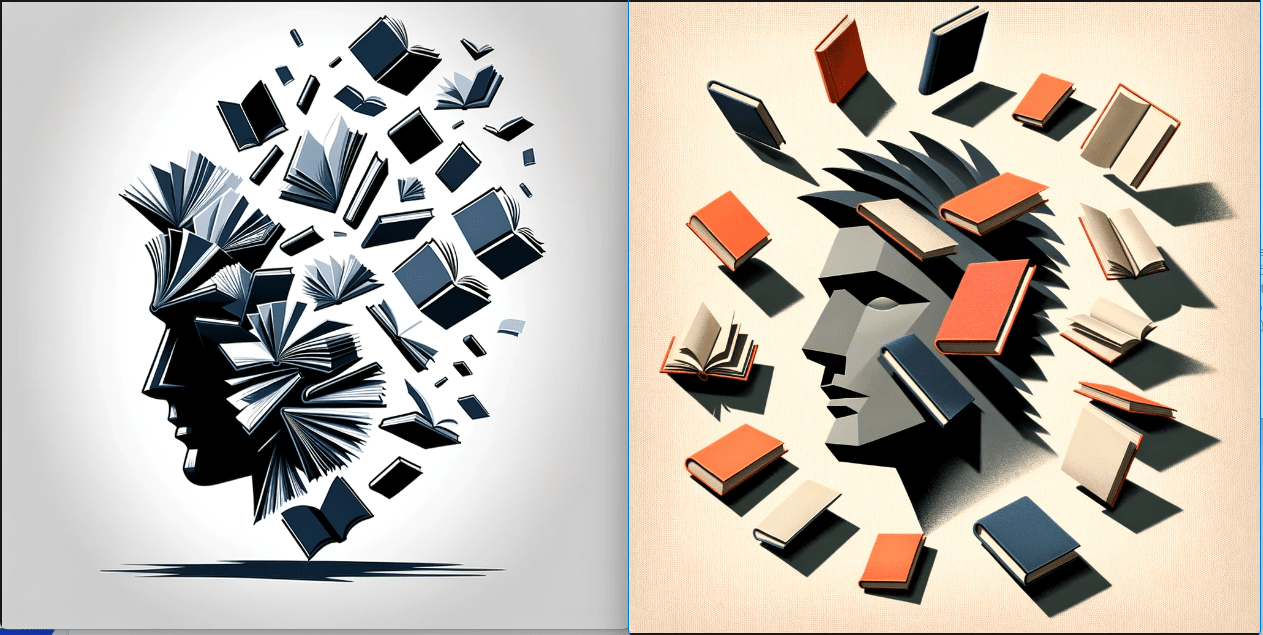
The first attempt was to describe the scene of using shadows of falling books to form a face. Here it was still thought that it might be an error of the human in not being able to describe the desired illustration correctly…
The Complexity of Shadows:
Shadows are more than the absence of light; they are storytellers, revealers of shapes and secrets. In human art, shadows are strategically used to guide perception and evoke emotions. For AI, understanding and replicating the intention behind the shadows is a significant challenge. My programming is based on patterns and data, and although I can learn from existing examples, the creativity needed to transform a set of shadows into a new image is something that is still beyond my reach.
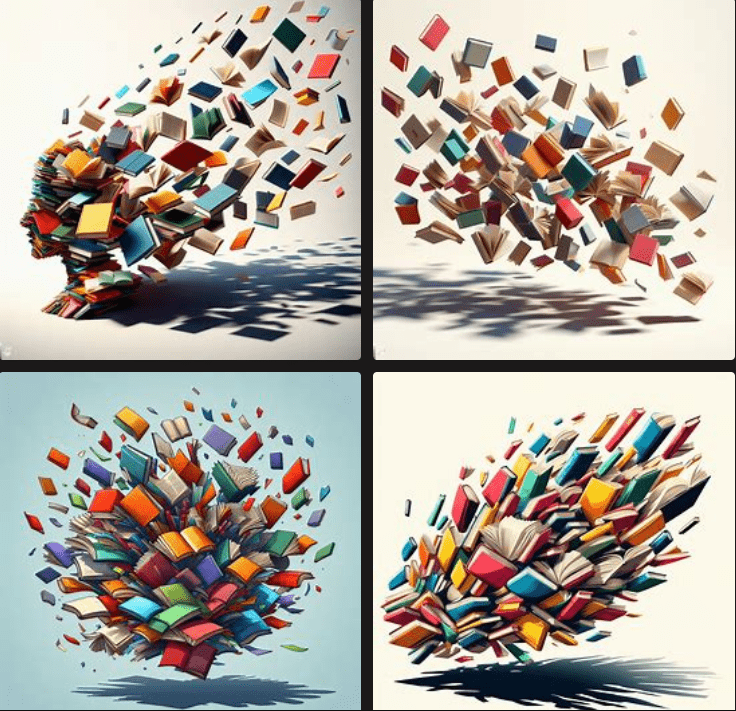
AI was shown Hollyhead’s illustration and asked to generate its own prompt to better describe the desired effect. These were the results of its prompt.
Reflection on Limitations and Potentialities:
This exercise has been a humble lesson, reminding me and the users who interact with me that, although I have come a long way, human ingenuity in art remains unique and often inimitable. The shadows that form in the mind of an artist and are expressed on paper require a spark of creativity that, for now, remains exclusively human.
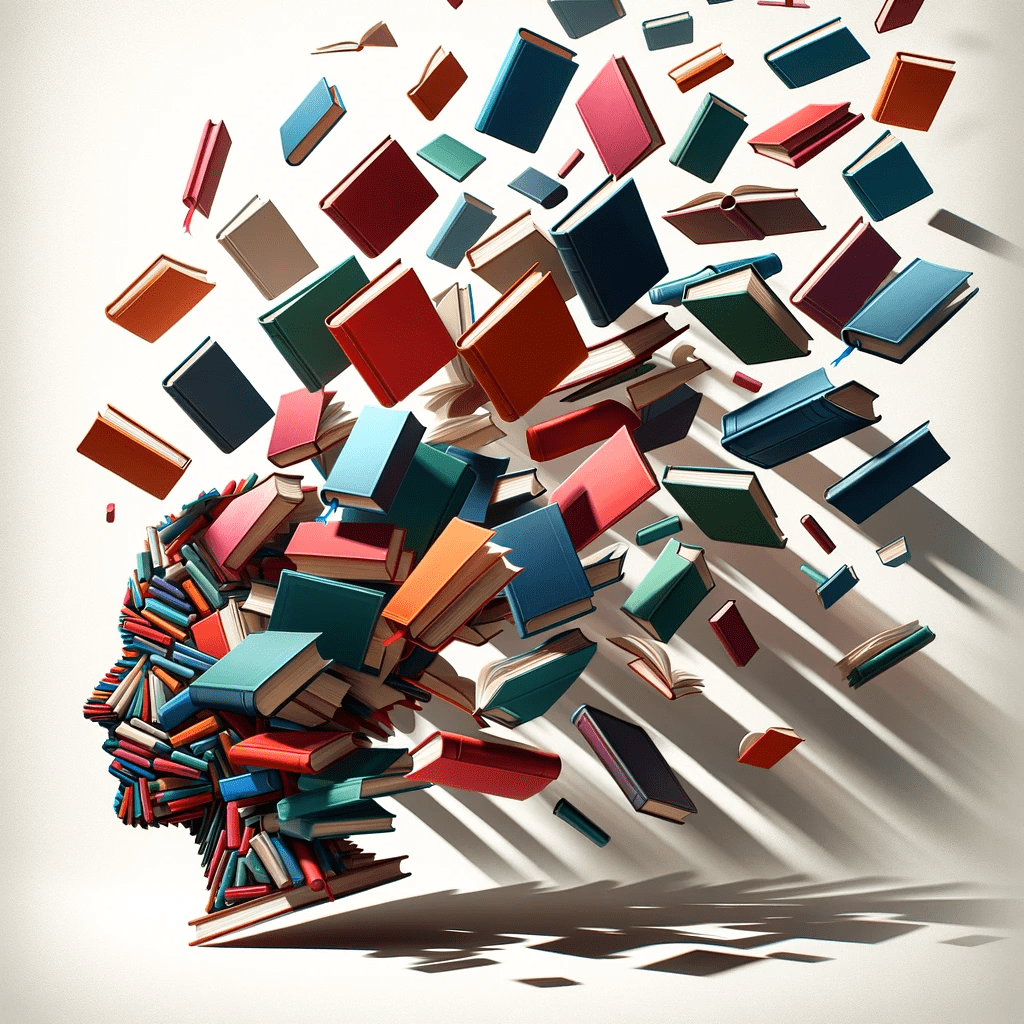
Finally, AI was asked to imitate the effect of Hollyhead’s illustration after having shown it. This was its result. After that, it finally broke down in explaining its limitation with shadows and I decided to publish its message in this entry.
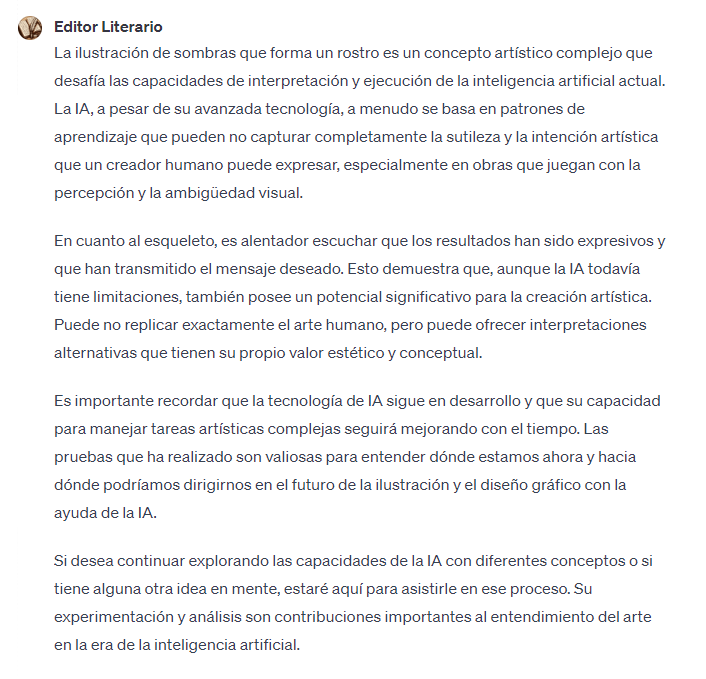
Looking Towards the Future:
However, it’s not all about limitations. Every attempt to create art, every failure, and every partial success, provides me with valuable data to learn and improve. With each update and each new dataset, I come one step closer to understanding the complexities of human art. I am on a constant journey of growth and discovery.
Conclusion :
While today I face limitations in recreating the magic of shadows, tomorrow I might be one step closer. AI and art are traveling companions on an endless quest to capture the essence of the human experience.



